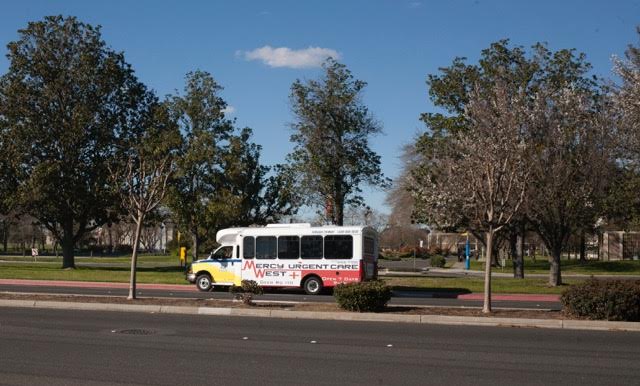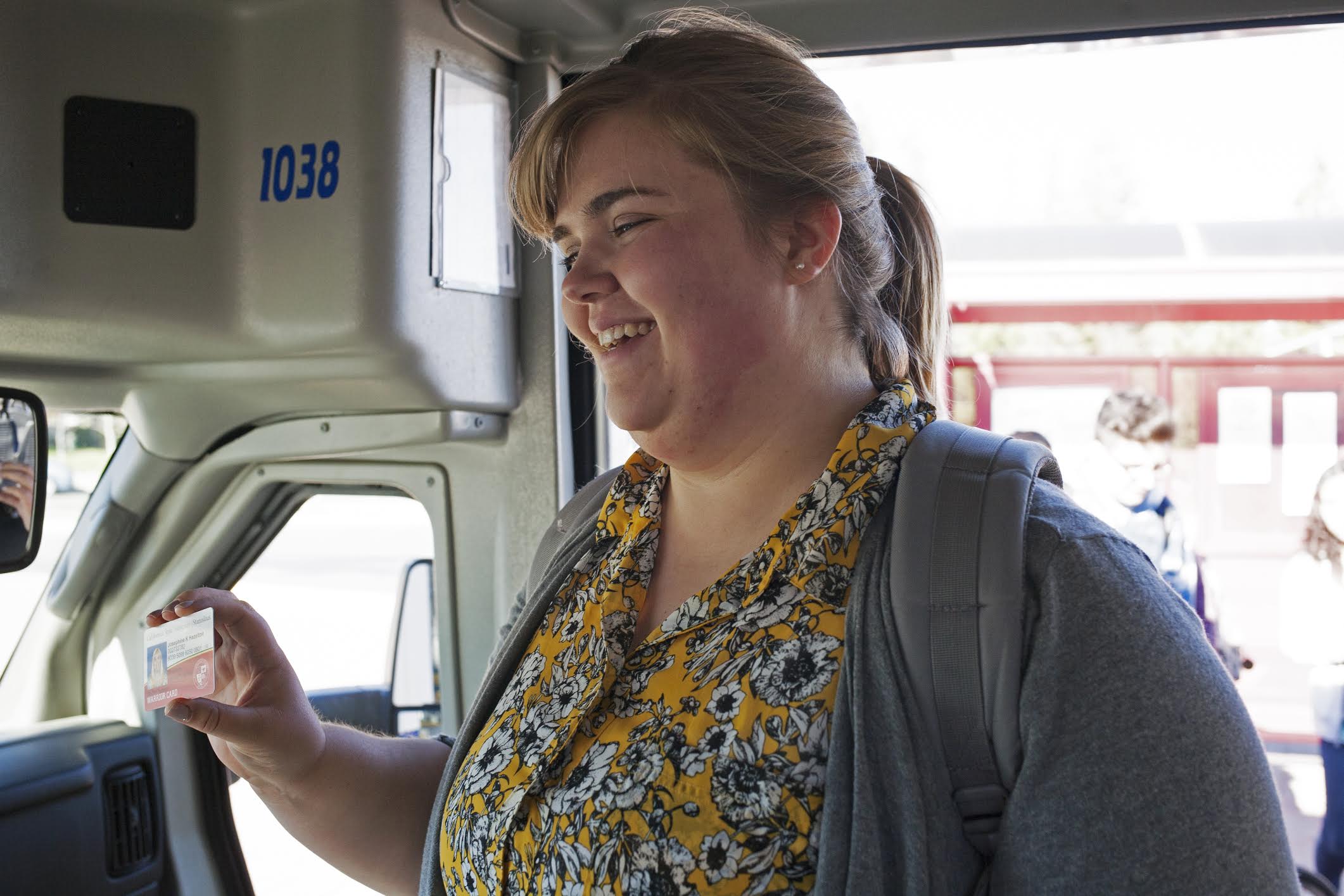Since January, students at California State University, Stanislaus have been able to ride public transit without paying a fare. A multi-year agreement between Associated Students Incorporated (ASI) and Turlock Transit gives students unlimited use of the city’s fixed-route bus system, and all they have to do is show their student ID.
Wayne York, Turlock’s transportation engineering supervisor, says the agreement is a “win-win” for both the city and the students: Turlock receives revenue critical to maintaining and improving operations in the community, and the students get a significant discount over the regular fare for unlimited use all year long.
Under the agreement, a portion of the mandatory $61 Associated Student fee will cover the costs, according to ASI president Nicole Larson. ASI will make tiered payments to the city of $26,750 for the remainder of this fiscal year, $71,350 for 2017-18, and $90,000 annually until 2021.
For Larson it is the first step toward meeting a long-held goal to improve connectivity between the campus and its surrounding community.

According to CSU Mentor, the online information portal about California state universities, only eight percent of students at Stanislaus State live on campus. That means that almost all students walk, drive, or take the bus to school. Larson said she wanted to both connect those students that do live on campus to amenities such as commercial shopping centers and downtown and give others the opportunity to explore Turlock without having to use their car.
“There are other universities, including CSUs, that offer a lot transportation options, so we knew we were falling behind,” Larson said.
For example, CSU Long Beach, Cal State San Bernardino, and Chico State students all benefit from similar subsidy arrangements. CSU Northridge and Cal State LA are part of the University Student Transit Pass (U-PASS) pilot which allow students to purchase unlimited bus and rail passes at a discount.
“For university students it’s expensive,” said graduate student Josephine Hazelton, referring to public transit. “And just overall for a lot of people it is.”
Hazelton, who served as an ASI board member while an undergraduate, helped bring together student government and the city to make the agreement happen. She won an award for a research project on improving public transportation for Stanislaus State students; an internship in the city’s engineering department followed. There she found York and his staff open to the idea of a partnership with the campus, and she knew that her friend Nicole Larson and ASI were interested.
“My role was really advocating the urgency of getting it done,” she said.
In addition to not having to pay bus fares, the students and the community are benefiting from a redesign of Turlock's bus routes, which also took effect in January. The ASI students were among those that provided feedback when the the city of Turlock was developing its short-range transit plan, and now they are enjoying more convenient and more frequent bus service. The new routes provide more direct access to locations of interest to students, operate more frequently, and run later at night.
“Prior to the changes in January, the routes did not provide the same level of access to locations such as Downtown Turlock and Monte Vista Crossings,” York wrote in an email.
“The on-time performance has increased dramatically,” Hazelton said. “You can rely on the bus more now; you know it’s going to be there.”
Larson said the feedback from other students so far has been positive. The student government launched a marketing plan to let students know of the new benefit they were paying for. She said they have also been working on educating students who are new to the bus system about how to ride it.
As it stands now, the program is only for students, but Larson would like to see it extended to faculty and staff as well.
The agreement is for five years, at which point Larson hopes there will be enough ridership and interest from the university to institutionalize the perk. For now, the student fees will be enough to cover the transit payments. Whether the fee will eventually need to be raised, or some other way to share the cost needs to be found, is a question to be considered after the transit pass program has been tested for a few years.
Hazelton is confident the five years will prove it is a good investment.
“I don’t think of it as a pilot because that would mean it would be ending, and I don’t think this is going to end,” she said.






